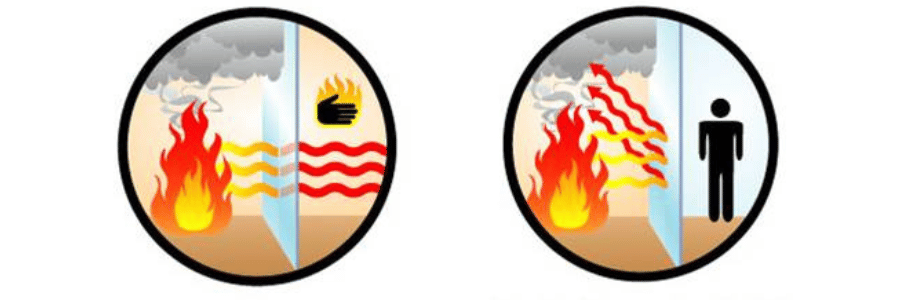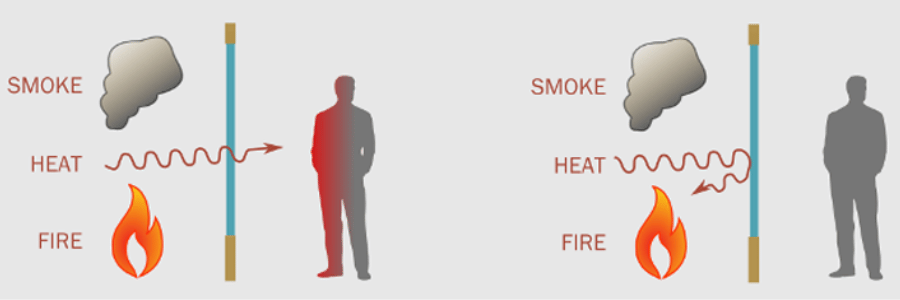When it comes to protecting your home or commercial space from fire hazards, choosing the right windows is crucial. Two common terms that often arise in this context are “fire rated” and “fire resistant.” While they may sound similar, they serve different purposes and understanding these distinctions is essential for ensuring your property’s safety and compliance with local regulations.

Fire Rated Windows
Fire rated windows are specifically engineered to meet stringent safety standards. They undergo rigorous testing to determine how long they can withstand flames and extreme temperatures before failing. This certification typically ranges from 20 minutes to 2 hours, depending on the specific product and its intended use. Fire rated windows are constructed using materials such as tempered glass, fire-resistant framing, and intumescent seals that expand when exposed to heat, effectively sealing gaps to prevent smoke and flames from penetrating. These windows are crucial in settings where building codes require fire protection, particularly in commercial buildings or multi-family residences where the risk of fire spreading is higher. By slowing the spread of fire and smoke, fire rated windows provide critical time for occupants to evacuate safely and for emergency responders to control the situation.
Fire Resistant Windows
On the other hand, fire resistant windows are designed to resist heat and minimize the transfer of flames, but they do not undergo the same rigorous testing and certification process as fire rated windows. While they can significantly contribute to overall safety by delaying the effects of fire, their level of protection is not quantified by a specific time frame. Fire resistant windows are often constructed using special glazing materials that can withstand high temperatures and help contain flames within a certain area. These windows are an excellent addition to any property, enhancing safety without the formal requirements of fire rated options. However, they should not be solely relied upon as a replacement for fire rated windows in high-risk areas or where building codes dictate stricter fire safety measures.

Key Differences
Certification
One of the primary distinctions between fire rated and fire resistant windows is their certification status. Fire rated windows must undergo extensive testing by accredited organizations to receive a fire resistance rating, ensuring they meet specific safety benchmarks. In contrast, fire resistant windows may not have formal certifications, leading to potential confusion about their effectiveness in a fire scenario. It’s important for property owners to understand these distinctions when planning construction or renovations.
Duration of Protection
Another significant difference lies in the duration of protection these windows offer. Fire rated windows are designed to withstand fire for a defined period, providing measurable safety assurances that are critical during emergencies. For instance, a fire rated window with a 60-minute rating will continue to perform under fire conditions for that entire duration. Fire resistant windows, while still beneficial, do not offer this specific time guarantee. Instead, they serve to slow down the spread of heat and flames, providing a more general level of safety without the precision of time-based ratings.
Applications
The applications of fire rated versus fire resistant windows can vary significantly. Fire rated windows are often mandated by building codes in certain areas, especially in commercial buildings, multi-family housing, and places where different occupancy types are adjacent to one another. These windows are critical in areas where safety regulations require the prevention of fire spread. Fire resistant windows, however, can be used as an additional safety measure in residential and commercial buildings. They enhance safety and can be incorporated into various designs where strict fire ratings are not required, making them versatile options for many property owners.

Conclusion
Understanding the differences between fire rated and fire resistant windows is essential for making informed decisions about your building’s safety and compliance with local regulations. Always consult local building codes, fire safety experts, and architects when planning installations or renovations to determine the best options for your specific needs. Prioritizing these safety features not only enhances protection but also provides peace of mind for you and your occupants. By investing in the right window solutions, you can safeguard your property and what matters most to you in the event of a fire.

